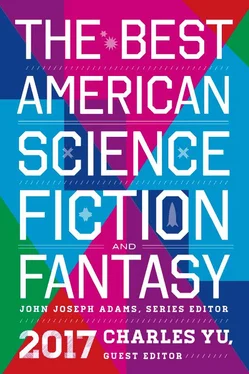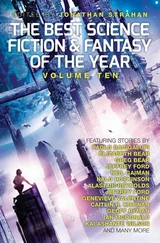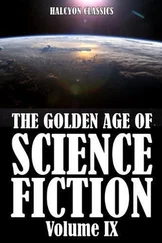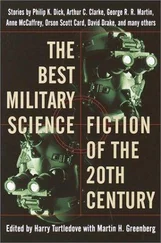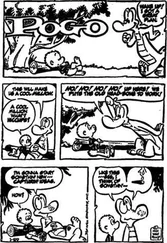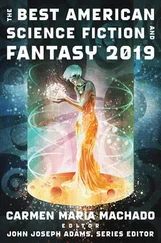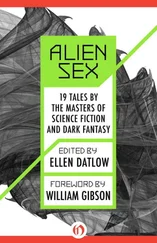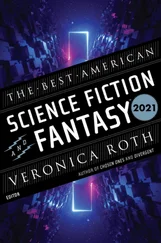# Located adjacent to Everfair rather than functioning as its sequel or prequel or holding any other position on that novel’s timeline, “Vulcanization” is told from a viewpoint I deliberately excluded from all other Everfair-related fiction: that of Leopold II, king of the Belgians. The historical Leopold my character is based on was a nasty piece of work, and I had a hard time inhabiting his head even for these few pages. I didn’t really want to use the racial slurs that came so easily to his lips, but that’s what his entitled callousness demanded.
Researching “Vulcanization” was a lot easier than writing it. I looked into rubber processing, the Royal Museum for Central Africa’s layout and architecture, and the personal foibles of this particular Belgian monarch. But then I had to put on a Leopold-shaped suit and wade into his story.
Did I construct the suit well enough? Was it proof against the ick? I hope that as you read you didn’t get any on you.
Jeremiah Tolbert is a writer, Web designer, and photographer. His work has appeared in Lightspeed, Asimov’s Science Fiction, Interzone, and numerous anthologies. He lives in Lawrence, Kansas, with his wife and son.
# “Not by Wardrobe, Tornado, or Looking Glass” required more time to get right than any other story I’ve written. I began tinkering with the idea nine years before and even completed a draft, but I didn’t know how to end the story. I was certain that my poor protagonist could never find what she desired most (a rabbit hole of her own), and in my relative youth, I could see this leading to nothing but despair. The original ending was too cliched to even describe here. It didn’t work, and I couldn’t see how I could make it, so I set the story aside and moved on.
Years later, after having a child, my perceptions of life shifted in very profound ways. One day, while waiting for another story idea to percolate, I went through my folder of unfinished and unsatisfactory work. I found this early manuscript and remembered my past frustrations. Upon rereading, I realized with one of those rare lightning bolts of insight that what my protagonist required wasn’t for her world to change; she needed to change her perspective of the world. It took going through a similar change of perspective in my own life to see what she truly needed most, and not just what she (and I) thought she needed. As a writer, this realization that my understanding of my own stories can change as I age has helped me feel less urgency in getting stories perfect right away. Sometimes they require a period of hibernation.
Debbie Urbanski‘s stories have appeared in The Sun, the Kenyon Review, Interfictions, Highlights Magazine, Cicada, Fantasy & Science Fiction, Nature, Terraform, and The Southern Review. She lives with her husband and two kids in Syracuse, New York, and is permanently at work on a linked story collection concerning aliens and cults.
# I wrote “When They Came to Us” at a time when I was convinced that ordinary people (such as myself, and perhaps you as well) were capable of great evil but we were all pretending otherwise. “Oh no, that would never be me,” I felt we were telling ourselves falsely when watching, on the news, whatever horrors were being committed that day. Why did I think this? Perhaps it was the beginning of a bout of depression. But also I was reading some really heavy nonfiction. Erik Larson’s In the Garden of Beasts, for starters, about 1933 Germany as seen through the American ambassador’s eyes—a study in, using Larson’s words, “what allows a culture to slip its moorings.” At the same time I was researching Abu Ghraib and war crimes in general for a bleak novella. Some of the soldiers involved in Abu Ghraib—one in particular, a woman who took certain photographs—seemed so normal and recognizable in interviews, and I wondered with dread whether, in such an environment, I could have done what she did. I became interested in Robert Jay Lifton’s idea of “atrocity-producing situations” in which ordinary people—“indeed, just about anyone,” Lifton writes—“can enter into ‘the psychology of slaughter.’” Eventually, after reading way too many books, I realized I was never going to figure it all out, so I should just write a story about it. That story became “When They Came to Us.” I was interested in telling this story using the collective voice as a way to invite the reader to step closer toward the narrators—the reader becoming, perhaps, for a little while, part of the town. An act not done by them but by us. Thank you to the editors of The Sun for giving this alien story its first home.
Catherynne M. Valente is the New York Times best-selling author of over thirty works of fiction and poetry, including Palimpsest, the Orphan’s Tales series, Deathless, Radiance, and the crowdfunded phenomenon The Girl Who Circumnavigated Fairyland in a Ship of Her Own Making (and the four books that followed it). She is the winner of the Andre Norton, Tiptree, Eugie Foster Memorial, Mythopoeic, Rhysling, Lambda, Locus, Romantic Times’ Critics Choice, and Hugo Awards and the Prix Imaginales. She has been a finalist for the Nebula and World Fantasy Awards. She lives on an island off the coast of Maine with a small but growing menagerie of beasts, some of which are human.
# “The Future Is Blue” came from a fairly simple assignment: Jonathan Strahan asked me to write a story about global warming, about the rising sea levels and how we would live in the new world they will almost certainly create for us, for an anthology called Drowned Worlds. I turned the idea over in my mind for several months and kept returning to two things: a line I’d had in my notebook for about five years, and the idea that we would live as we always have, with the same dramas and shortsightedness and lonely children and longing for entertainment above almost all other things, only there would be much, much fewer of us and we would be sea-bound. The line was, “When I grow up, I want to be the Thames.” And the idea became Garbagetown. I’ve always been fascinated with the Great Pacific Garbage Patch, in part because it sounds like something out of a children’s book, but it is heartbreakingly real, a roving patch of garbage in the ocean the size of Texas. And how much bigger will it become when coastal cities are inundated? How much will it be a testament to everything we had and threw away? If I was going to write a story about the ruin of our world, I couldn’t think of a better place to set it than on top of all our flotsam and jetsam, full of humans doing the same stupid and sublime things they’ve always done, the same tribal foolishness, the same hoarding, the same extremes of violence and revenge, the same fear of change and yearning for it.
I’d intended to explore Garbagetown in a third-person point of view, describing the world as much as the characters. But Tetley’s voice took over, and her first line, “My name is Tetley Abednego and I am the most hated girl in Garbagetown,” demanded to be left in charge of everything. I couldn’t let go of that line, of the question it asked—when the world has already ended, what can a person do that is worse than everything that’s already happened? And so it was her voice, her inexplicable cheerfulness, her crime, her punishment, and a child whispering that he wanted to become the Thames (appropriately, all clinging together like floating detritus of the mind) that I followed through a beautiful and horrible world of half-understood rubbish, which is, naturally, a perfect descriptor of the world at any time period. Beautiful and horrible and full of half-understood rubbish. That seems unlikely to ever really change. In “The Future Is Blue,” it just becomes literal. How we will live if the seas take back the land will be only different in setting, because we are tragic animals in the end, and the seed of our downfall is buried deep in our nature, never to be entirely thrown away, along with teabags and spent candles and old earrings and advertising circulars and kerosene cans…
Читать дальше
